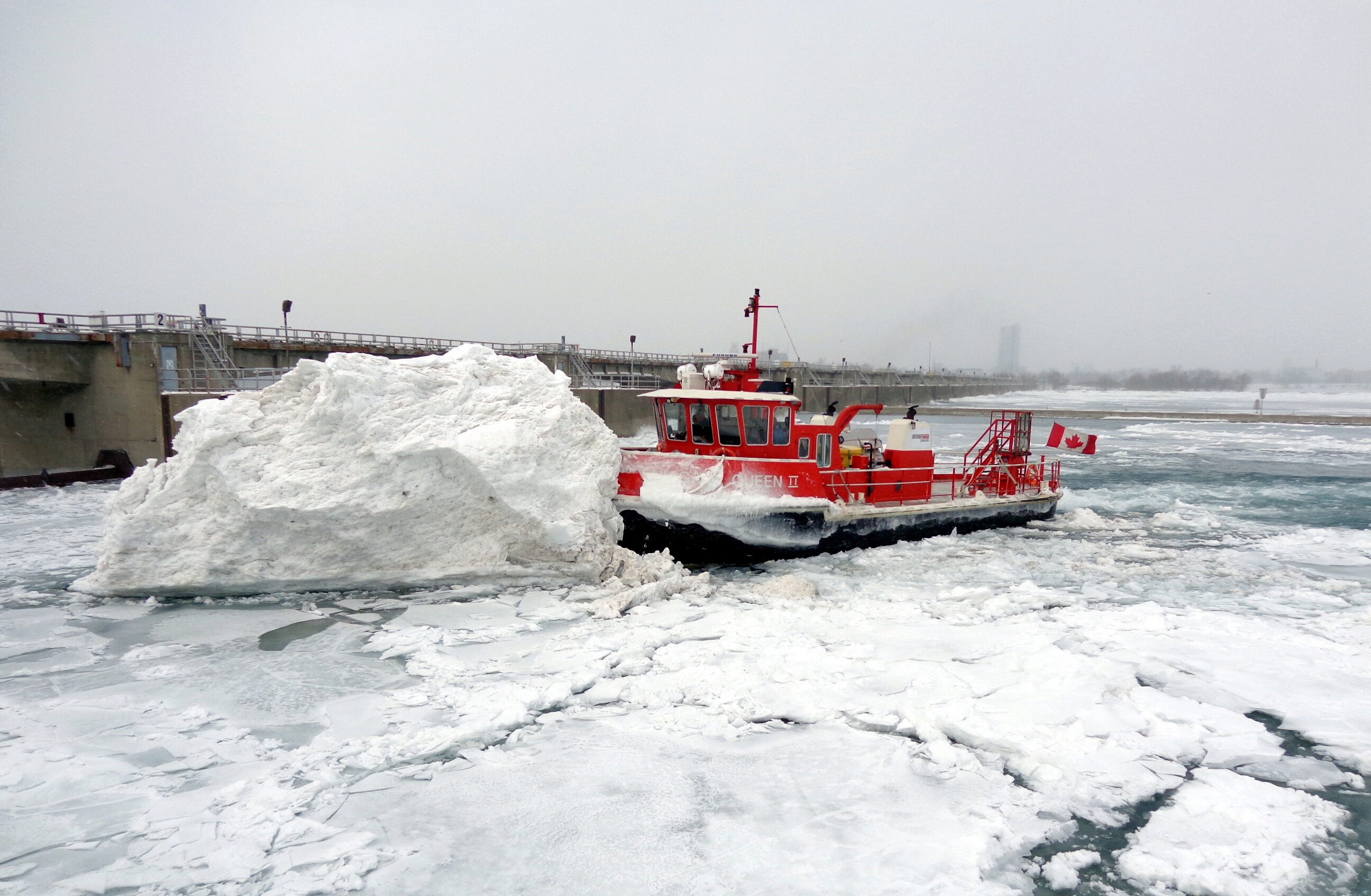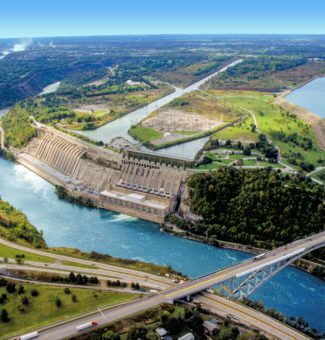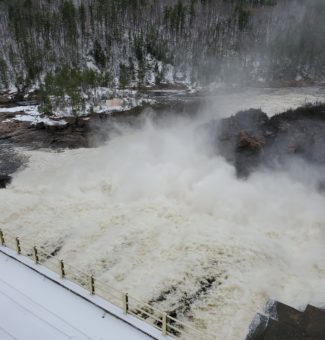Niagara icebreaker keeps the water flowing

As Ontarians shiver through frigid temperatures, the battle-tested Niagara Queen II icebreaker is working hard to smash winter’s icy grip on the Niagara River.
First commissioned in 1992, the small, dependable icebreaker, owned and operated by OPG, helps keep the water flowing to OPG’s Adam Beck hydroelectric stations, which generate more than 2,000 megawatts of power for the province.
The 85-tonne vessel is powered by two 1,720-horsepower diesel engines which help the Niagara Queen II smash through ice chunks and keep the river clear.
"Ice on the surface that’s two inches thick can grow to six feet thick or more in a hurry if it’s allowed to stack and build up on the intake wall," said Jessica Polak, OPG's Vice-President of South Central Operations. "Adding to that, while working on the Niagara River, the water flows are very dynamic, and you’re typically breaking very thick ice in moving water. It can be quite challenging."
"Ice on the surface that’s two inches thick can grow to six feet thick or more in a hurry if it’s allowed to stack and build up on the intake wall."Jessica Polak, Vice-President of South Central Operations
Employees at OPG’s International Niagara Control Works regulate the flow of water in the Niagara River and over Niagara Falls. In the winter, this also involves monitoring for ice buildup in the river, in an area called the Chippawa-Grass Island Pool, upstream from the control centre.
If ice threatens to clog the hydroelectric intakes that deliver water to the stations downstream, the NRCC team will call on the Niagara Queen II and its three-person crew – a captain, an engineer, and a deckhand – to deal with the problem.

"We’re very careful about not putting the boat out at the wrong time since employee safety is paramount," Polak said. "And we make sure to send it out with a companion vessel when the conditions warrant that."
Depending on the weather, a typical winter sees the icebreaker running for 300 to 400 hours in a season, and it can be out clearing ice as early as Dec. 20 and as late as May.
OPG’s predecessor, Ontario Hydro, first began deploying an icebreaker in the early 1960s with the Niagara Queen, a modified tugboat icebreaker. Today, depending on the location and severity of the ice problem, OPG can call upon the Queen II or the larger William H. Latham icebreaker that is owned and operated by the New York Power Authority.
The Latham, which has a spoon-shaped bow, can break up a large field of ice by riding on top of it, whereas the Queen II has a knife-edged bow better suited for slicing through ice, especially near the intakes.
In cases of an extreme cold snap, both icebreakers can be called to help maintain the flow of water.
Subscribe and stay informed
Sign up to receive the latest news, project updates, and event information from OPG.


